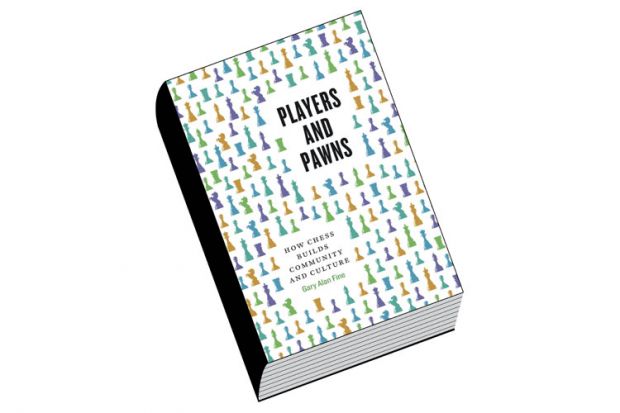“Chess is the drosophila, or fruit fly, of cognitive science,” Gary Alan Fine remarks early in this engaging study of “chess worlds”. Since chess as an activity fits the prevailing paradigm of the brain as computer, and allows for performances on standardised tests to be used to test cognitive hypotheses, the contribution to cognitive science made by players could well be compared with that of generations of insects. Although, as Fine shows, these human drosophilae are less predictable and easy to control than their bug brethren.
A traditional ethnography, Players and Pawns combines rigour with a wry lightness of touch. Even those for whom chess has always seemed a bizarre mixture of obsession, paranoia and sublime mastery, will see it revealed as a wondrously diverse landscape of contrasting temperaments, climates and folkways.
Sociology applied to any topic is likely to focus on social relations, which naturally challenges the everyday view of chess as a game of the brain and heart. Fine differentiates between people who can play and people who are actually engaged with a “chess world”. Those of us who have some grasp of the rules but lack a commitment to a community are players who “do not see what they see”, according to an insider, because chess play is comprehensible only through the culture and common understandings of a chess world, be it a school club or a tournament between international grand masters. Each field of battle has its particular characteristics: the great test cricketer Andrew Flintoff ruefully described being subject to general displeasure while playing in a school chess tournament because he knowingly allowed an opponent to miss the requirement to stop his time clock. Compare this with the behaviour of grandmasters such as Bobby Fischer and Boris Spassky, grabbing tabloid headlines by disrupting proceedings, upstaging and psyching each other out.
Chess is a game shaped by time and timing. All domains are, of course, but here the peculiarity and multiplexity of the cultures emphasise and distort the behaviour of actors. As one veteran interviewed by Fine puts it, “the most important move here is a bowel movement”. Eccentricity is amplified by the silence and stillness, and time itself becomes a critical resource to be used against opponents, including the timing of comfort breaks.
As this book shows, there are marked differences in players’ behaviour and statements. “Strong” players often display psychiatric disorder, with symptoms lurking just below the surface. Fine quotes Nigel Short, a British grandmaster, describing his motivational state as “I want to rape and mate (my opponent)”. According to Viktor Korchnoi, “No chess grandmaster is ‘normal’. They only differ in the extent of their madness.”
Chess is a game that occupies a unique cultural space, with the names of the pieces reflecting the culture, politics and social organisation of past eras. Impervious to change, the main pieces remain royalty and religious figures, in Russia as well as the US, immune to politics even when the game itself becomes a site of political tension. As a paradigm, it lends itself to every kind of human concern, from psychoanalysis to military strategy, from celebrity culture to international politics. Fine is an astute guide to its people and cultures, and here offers a compellingly nuanced treatment.
Les Gofton is teaching fellow in sociology, Durham University.
Players and Pawns: How Chess Builds Community and Culture
By Gary Alan Fine
University of Chicago Press, 288pp, £18.00
ISBN 9780226264981 and 65032 (e-book)
Published 21 August 2015
后记
Print headline: Making all the right moves




